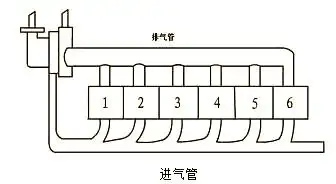- Contact Us : +8613275227311 +8613961444097
- Email us : lisa@feito-tech.com jojo@feito-tech.com
news
We ensures you the Best Quality Services
01
Basic overview of turbocharging
Turbocharging is a technology that drives the compressor to rotate at high speed by pushing the turbine with exhaust gas, and sends the supercharged air to the cylinder.
Working principle of turbocharging
Turbocharger consists of turbine and compressor, which are connected by a drive shaft. The air inlet of the turbine is connected to the exhaust manifold of the engine, and the exhaust port is connected to the exhaust pipe; Similarly, the air inlet of the compressor is connected to the intake pipe, and the exhaust port is connected to the intake manifold. How does turbocharging really work? This is mainly dependent on the exhaust gas from the engine, which impinges on the turbine to make it rotate at high speed, thus driving the coaxial compressor to rotate at high speed. In this way, the pressurized air is forced into the cylinder. Based on the principle of turbocharging, we can divide it into two systems: constant pressure turbocharging system and pulse turbocharging system.

02
Classification of turbocharging
Constant pressure turbocharging system
The constant pressure turbocharging system collects the exhaust gas from each cylinder of the internal combustion engine into an exhaust pipe with sufficient volume and then introduces it into the turbine. Although the exhaust of each cylinder is conducted alternately, the pressure at the turbine inlet is kept relatively stable due to the pressure stabilization effect of exhaust pipe, so it is named as constant pressure supercharging system.
Strengths of constant pressure system
The obvious advantages of constant pressure turbocharging include: the turbine achieves full cycle intake under stable pressure, thus improving the efficiency; Reduced airflow excitation and reduced blade breakage risk; The exhaust system is simple in design, low in cost and easy to arrange and maintain.
Disadvantages of constant pressure system
However, it also has some shortcomings, such as relatively low utilization rate of pulse energy. The experimental data show that the constant pressure supercharging system can only use 12% - 15% of the exhaust energy when the supercharging pressure is small, while the utilization rate can be increased to more than 30% when the supercharging pressure is high. In addition, constant pressure supercharged internal combustion engines do not perform well in low-speed torque characteristics and acceleration performance.
Pulse turbocharging system
The pulse turbocharging system works to boost the underutilized energy in the constant pressure system. The design concept is to shorten and refine the exhaust pipe and strive to reduce the volume of the exhaust system, so that the exhaust gas can enter the turbine directly and quickly for expansion work, thus reducing the throttling loss. At the same time, in order to reduce the mutual interference of exhaust pressure waves of each cylinder, two or more exhaust branches are usually used to separate the exhaust of adjacent firing cylinders.
Improvement of pulse system
The pulse system performs better in utilizing the exhaust energy of an internal combustion engine than a constant pressure system, and the smaller the volume of the exhaust pipe, the better. As a result, in recent years a compact design has emerged that blends the supercharger with the exhaust pipe.

